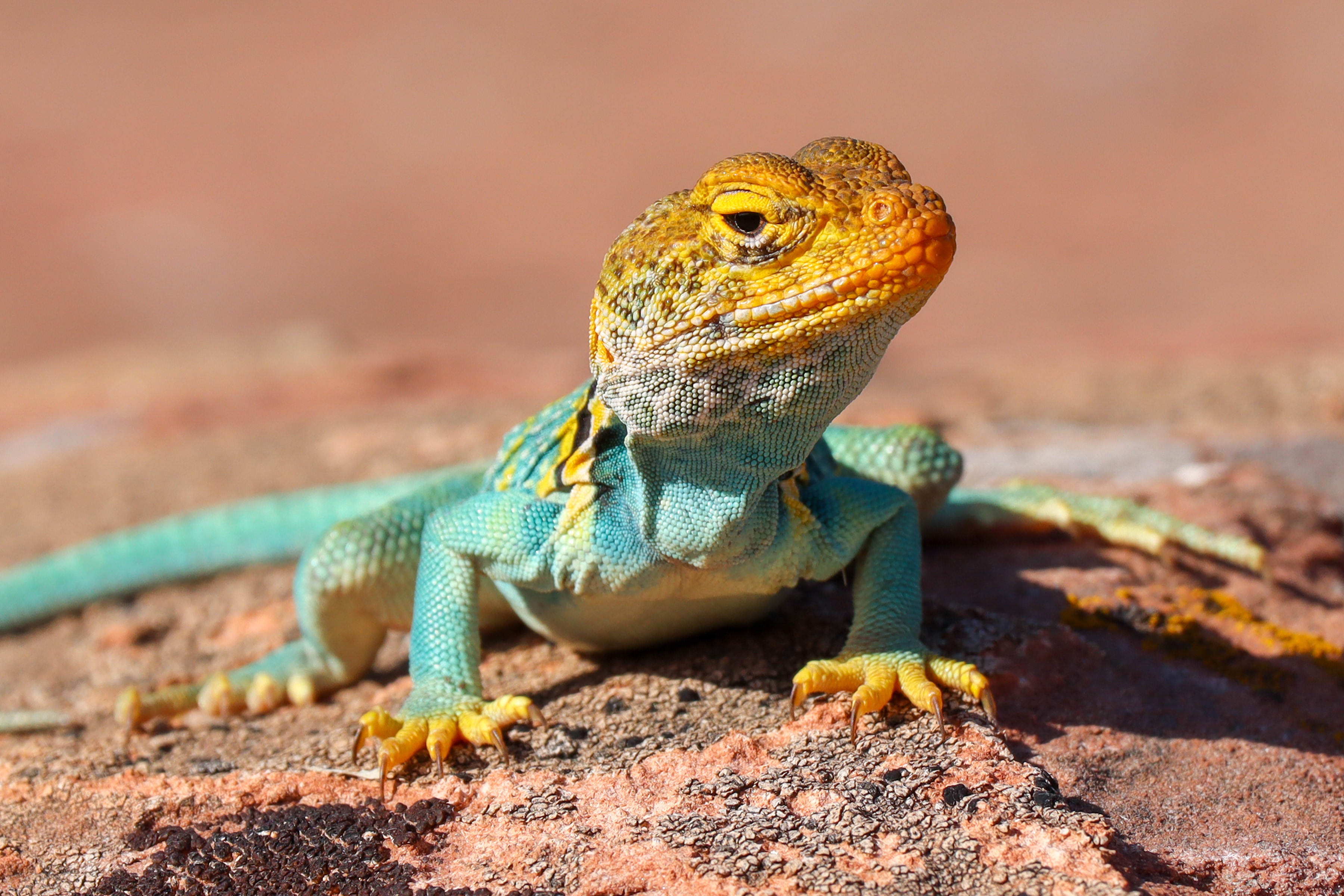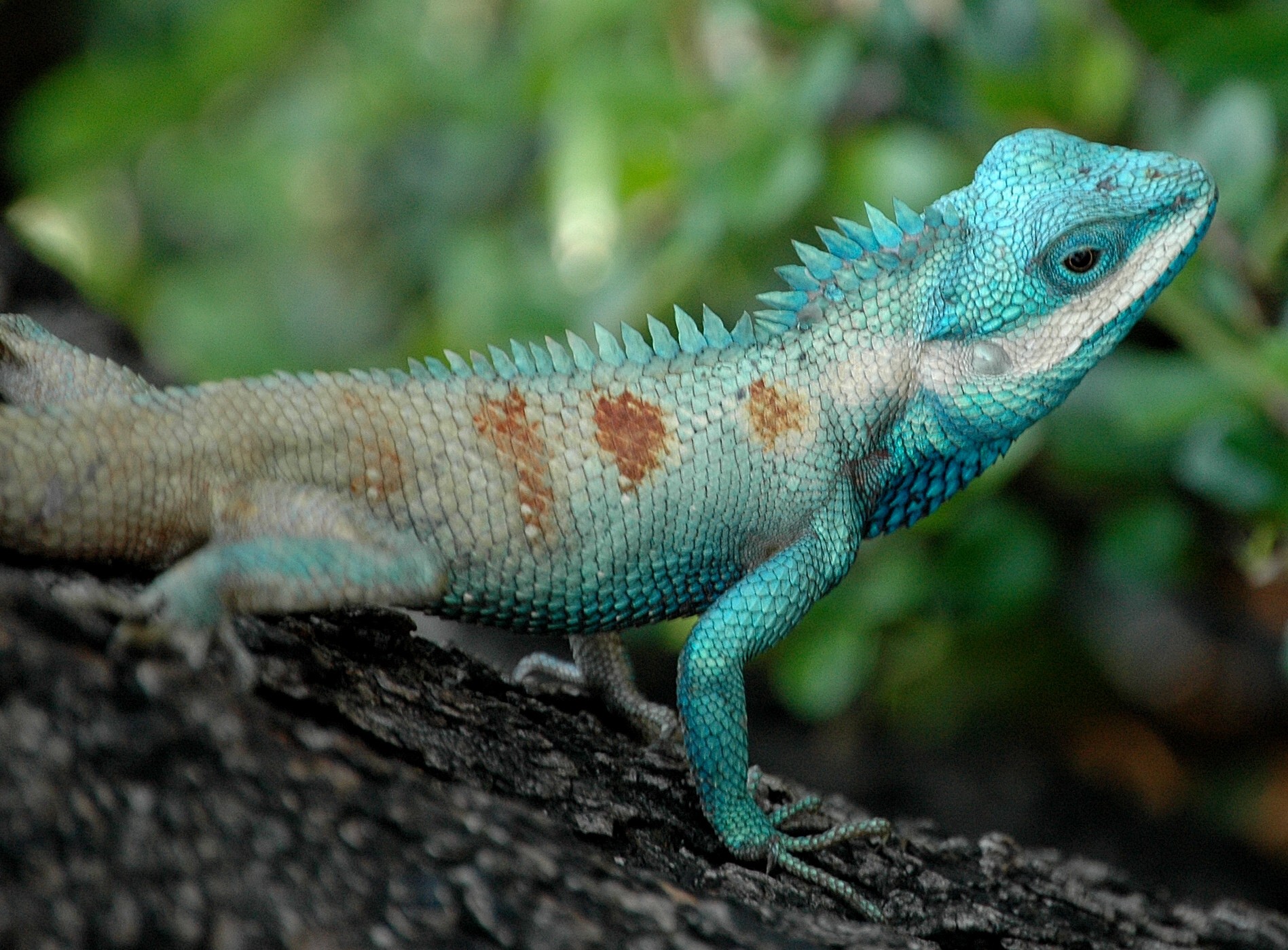Florida's Uninvited Guests - The Invasive Lizards
Florida, a place recognized for its bright days and lovely landscapes, is also dealing with some rather unwelcome guests, particularly certain kinds of lizards. These creatures, while fascinating in their own right, are creating a good bit of commotion across the state, you know.
You see, when animals from far-off places make their way into new environments, they can sometimes upset the delicate balance of things. That's exactly what's happening with these non-native lizards. They're not just cute little reptiles; they're actually a pretty big concern for the local wildlife and natural spaces, in a way.
This situation, involving what we call invasive species, is something folks in Florida are working hard to manage. It affects everything from the smallest native critters to the overall health of the ecosystem, as a matter of fact.
- Project X Real Life
- How Old Is Lady Gaga
- Penelope Cruz Where Is She From
- English Nicknames For Lovers
- Teyana Taylor Career
Table of Contents
- What Makes a Lizard Florida Invasive?
- Where Do These Uninvited Lizards Come From?
- How Do Invasive Lizards Impact Florida's Ecosystem?
- What Can Be Done About the Lizard Florida Invasive Problem?
- Are All Lizards in Florida a Problem?
- The Broader Picture of Lizard Challenges
- Community Involvement in Addressing Lizard Issues
- Looking Ahead for Lizard Management
What Makes a Lizard Florida Invasive?
When we talk about something being "invasive," it generally means a species that isn't native to a particular area and causes harm to the environment, economy, or human health. For lizards in Florida, this means certain traits allow them to settle in and spread widely, often pushing out local creatures. A lizard, by the way, is a general term for many different kinds of reptiles, so it covers a wide array of creatures, you know.
One of the main things that helps a lizard become a problem is its ability to adapt. These animals can often adjust to new food sources and different living spaces with relative ease. They might eat a variety of things, from insects to plants, which gives them a leg up in a new place. So, they don't rely on just one type of food, which is actually a helpful survival skill.
Another factor is how quickly they can reproduce. If a lizard species can have many offspring in a short amount of time, its population can grow very fast. This rapid growth means more mouths to feed and more bodies taking up space, which puts pressure on the existing resources. In some respects, it's a numbers game.
Then there's the issue of natural enemies. In their original homes, these lizards have predators or diseases that keep their numbers in check. But when they arrive in a new spot, those natural controls might be missing. Without anything to keep them from growing too numerous, their populations can really get out of hand, more or less.
Identifying the Lizard Florida Invasive Challenge
The challenge with identifying a lizard Florida invasive situation often comes down to observing these traits in action. We might see them taking over areas where native animals used to live, or notice a drop in the numbers of local insects or small animals that these new lizards are eating. It's about seeing the changes they bring to the natural world, in a way.
Some of these lizards, like the iguana, for example, are quite large creatures. The iguana, it is worth remembering, comes from the Americas and is a native animal there. Its size alone means it can consume a fair amount of food and take up significant space, which could be a factor in how it impacts a new place, you know.
So, when we look at the lizard Florida invasive issue, we're considering how these adaptable, fast-reproducing animals, often lacking natural predators, can disrupt the natural order. It's a complex puzzle, and understanding these elements is the first step, basically.
Where Do These Uninvited Lizards Come From?
It's a fair question to ask how these lizards, which are not originally from Florida, end up making a home there. The truth is, there are a few common ways. Often, they arrive because people bring them in, sometimes on purpose, sometimes by accident. This is a very common story for many non-native species, you know.
One of the biggest routes is the pet trade. People might buy a lizard as a pet, perhaps not fully understanding how big it will get or how much care it needs. When the pet becomes too much to handle, or if it escapes, it can sometimes survive and even thrive in the wild. For example, an iguana, being a large animal from the Americas, might find Florida's warm climate quite suitable if it gets out, as a matter of fact.
Another way these creatures get around is by hitching a ride. They might hide in cargo shipments, on boats, or even in potted plants being moved from one place to another. These accidental journeys can transport a lizard to a completely new environment, where it might then establish a population, basically.
It's not always a case of intentional release. Sometimes, things just happen. A hurricane, for instance, could blow animals from one island to another, or even from the mainland. While this is less common for many species, it's still a possibility for how a lizard might end up in a new location, you know.
The Origins of Florida's Invasive Lizard Population
When we think about the origins of a lizard Florida invasive population, it often points back to human activity, whether directly or indirectly. The sheer volume of goods and people moving around the globe means more chances for species to travel beyond their native ranges, you see.
The iguana, as we mentioned, is a native of the Americas, and it is generally a large creature. If an iguana, or any other lizard from a similar warm climate, finds itself in Florida, the conditions can be quite welcoming. This means it might not just survive, but truly begin to multiply, which is when it starts to become a concern, pretty much.
So, the story of how these animals arrive is often one of unintended consequences. A pet owner's decision, or a small oversight in shipping, can lead to a big change in the natural world. It’s a reminder that our actions, even small ones, can have wide-ranging effects, you know.
How Do Invasive Lizards Impact Florida's Ecosystem?
Once these non-native lizards get a foothold, they can start to cause real trouble for the local ecosystem. The natural world is a delicate web, and when a new thread is added, especially one that wasn't meant to be there, it can pull on everything else. So, the impacts can be quite varied, in a way.
One of the most direct impacts is competition. These new lizards need food and shelter, just like the native animals. If they're more efficient at finding food or better at defending territory, they can outcompete the local species. This means less food and fewer safe places for the animals that are supposed to be there, you know.
They can also become predators. Some invasive lizards might eat the eggs or young of native birds, or consume native insects and small reptiles that are important parts of the food chain. This can lead to a decrease in the numbers of these native animals, which then affects other species that rely on them for food, too.
There's also the possibility of disease. Invasive species can sometimes carry diseases or parasites that native animals have no natural resistance to. When these diseases spread, they can cause serious harm to local wildlife populations, which is something we certainly want to avoid, pretty much.
Understanding the Lizard Florida Invasive Effects
To really understand the lizard Florida invasive effects, we need to look at the chain reactions they set off. Imagine a situation where a new lizard eats all the food that a native bird needs. That bird might then struggle to survive, and if enough birds struggle, their population could shrink. This has a ripple effect through the entire natural community, you know.
The word "dinosaur," by the way, comes from an old Greek term that means "terrifying lizard." While we're not talking about dinosaurs here, the idea of a "terrifying" creature, in terms of its impact, can sometimes apply to invasive species. Their presence can be quite formidable in how it changes the existing natural balance, so to speak.
So, the effects go beyond just seeing a new lizard. They touch on the health of the entire ecosystem, affecting everything from the food available to the very survival of native species. It’s a serious matter that requires careful attention, as a matter of fact.
What Can Be Done About the Lizard Florida Invasive Problem?
Addressing the issue of invasive lizards in Florida requires a multi-faceted approach. It's not a simple fix, but there are many things that can be done to help manage the situation and protect Florida's natural heritage. We can't just wish them away, you know.
One key step is public awareness. When people understand the problem, they're more likely to avoid actions that contribute to it, like releasing unwanted pets into the wild. Educating folks about which lizards are native and which are not is a big part of this, you see.
Early detection is also very important. The sooner an invasive lizard population is spotted, the easier it is to control or even remove it before it spreads too widely. This often involves people reporting sightings to wildlife authorities, which is actually a very helpful thing to do.
Then there are removal efforts. For established populations, various methods are used to reduce their numbers. These can range from trapping to other more direct approaches, all done with the goal of lessening their impact on native wildlife. It’s a bit of a constant effort, you know.
Strategies for Managing Lizard Florida Invasive Species
When it comes to strategies for managing a lizard Florida invasive situation, it’s often about combining different approaches. It's not just about removing the animals, but also about preventing more from arriving and restoring the natural environment. So, it's a bit of a long game, you know.
Habitat restoration plays a role too. By making sure native habitats are healthy and strong, they can better support native species, making them more resilient to the pressures of invasive ones. This means protecting wetlands, forests, and other natural areas, basically.
Research is another piece of the puzzle. Scientists study these lizards to learn more about their behavior, their diet, and how they reproduce. This information helps develop more effective ways to control them and understand their ecological role. It’s about being smart about how we approach the problem, you know.
Ultimately, it’s a shared responsibility. Everyone, from state agencies to individual citizens, has a part to play in protecting Florida's unique ecosystems from the challenges posed by these non-native creatures. It's a continuous effort that really needs everyone to pitch in, you see.
Are All Lizards
- Did Project X Really Happen
- Who Is Cassie Ventura
- Project X Movie Real Story
- Mike Drint
- Making Of Project X

Eastern Collared Lizard - Colorado National Monument (U.S. National

Are All Lizards Cold Blooded: Fact Or Myth? - Reptile Behavior

Lizards